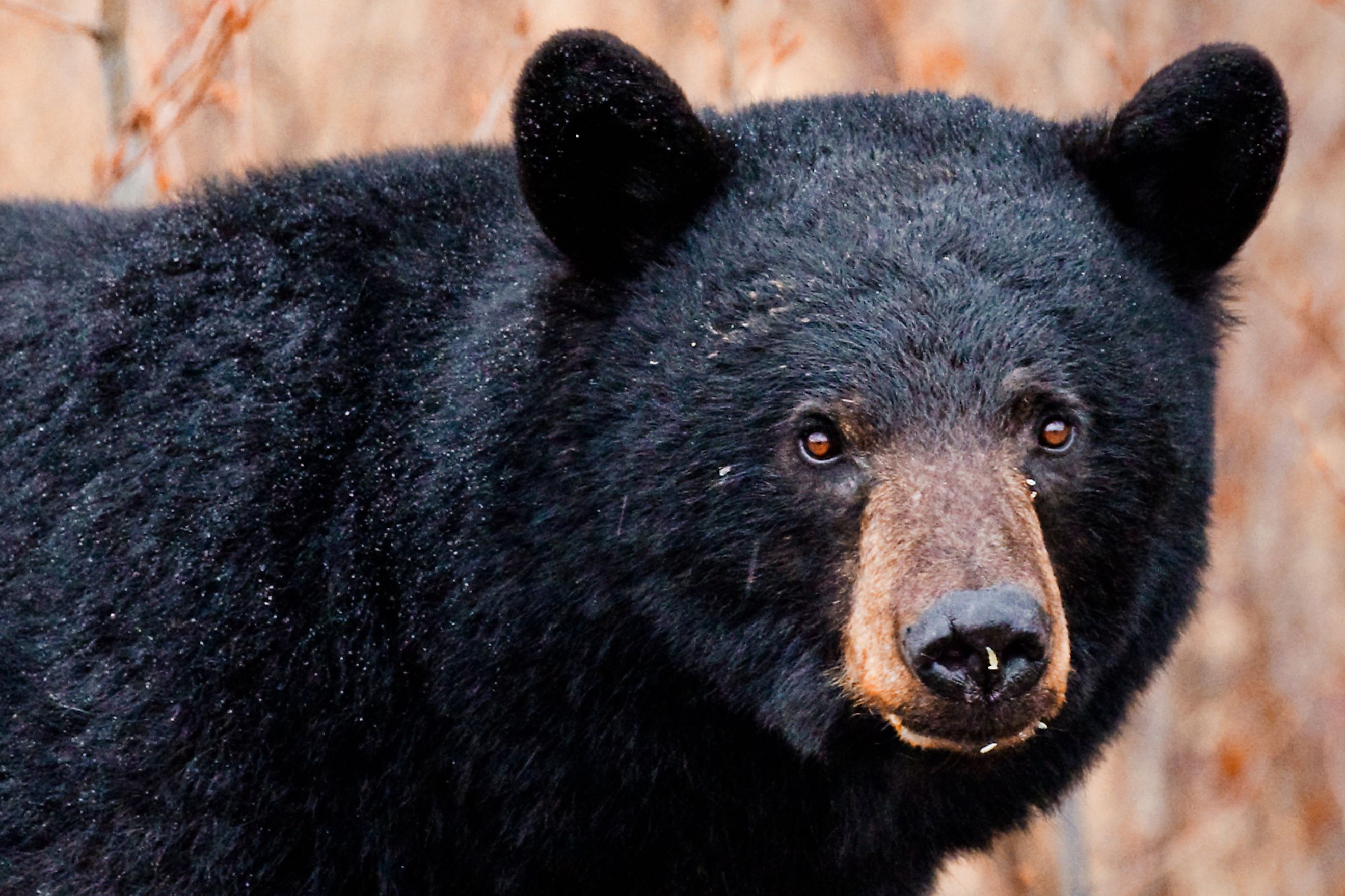
The 13 Deadliest Animals in New Hampshire
New Hampshire, known for its beautiful landscapes and diverse wildlife, is a jewel for outdoor enthusiasts. With hiking, biking, snow sports, and water sports, stay busy for days with the state’s serene lakes and beautiful mountains. However, the outdoors doesn’t come without nature’s hazards. Some animals can pose risks to humans. It is crucial to arm yourself with knowledge and take the necessary precautions in case you face any encounters. Here are 13 of the most dangerous animals in New Hampshire and what to do if you encounter them.
Black Widow Spider
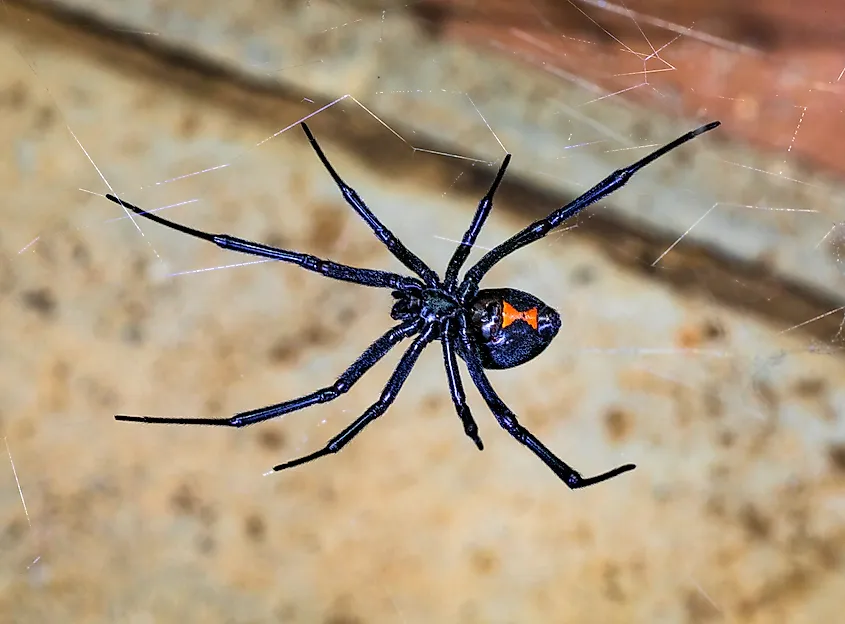
Known for eating their male mate after mating, black widow spiders known as Latrodectus are poisonous arachnids with a fearsome reputation. Northern Black Widow Spiders are present in New Hampshire, primarily in secluded and dark areas such as woodpiles and basements. However, encounters are relatively rare.
Northern black widows prefer dark, secluded areas such as woodpiles, sheds, garages, basements, hollow logs, under rocks, and dense forest areas. These spiders build irregular webs close to the ground, designed to trap insects.
While these spiders are known for their dangerous bite, they are not aggressive and only bite in self-defense. Generally shy in nature, they will avoid confrontation, preferring to retreat rather than attack. Bites can occur when someone comes into contact with the spider’s web. A black widow spider bite contains latrotoxin, a potent neurotoxin that can cause muscle pain, cramps, abdominal pain, weakness, tremors, and sweating. And in severe cases can cause nausea, vomiting, and difficulty breathing.
So, what do you do if you encounter a black widow? Most importantly, stay calm. Avoid sudden movements and remember these spiders are more likely to flee than attack. Never touch or handle a black widow. If you need to move the spider, use a long object like a stick, to gently guide it into a container.
If you are bitten by a black widow, follow these steps:
- Clean the area with soap and water.
- Apply ice to reduce pain and swelling
- Seek medical attention immediately. Though antivenom is available, it is typically not needed.
By understanding and respecting this magnificent creature’s behaviors and habits, you can minimize the risks of encountering a Black Widow and coexist safely with these spiders.
Moose
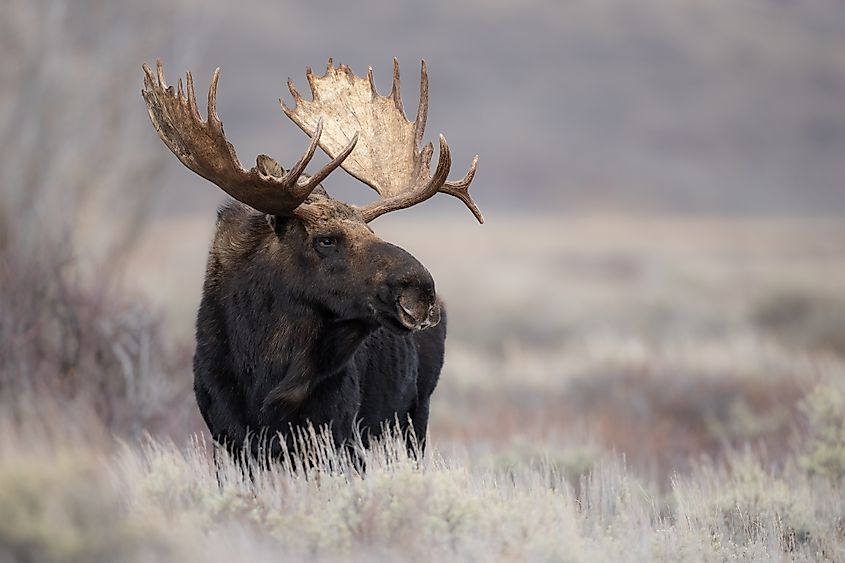
New Hampshire’s lush forests are home to the iconic and impressive moose. These gentle giants are a sight to behold, but it is essential to understand their behavior and habits if you encounter one. Well-adapted to the terrain, moose can be found in dense forest areas, wetlands and bogs, and elevated areas like mountains and hills. They are herbivores, feeding on vegetation such as leaves, twigs, bark, and aquatic plants. Moose are known to move seasonally, seeking food and optimal temperatures they tend to stay in lower-elevation areas during the winter and higher-elevation areas during the summer. Though they may form small groups, moose are solitary creatures by nature.
Moose generally avoid human contact; however, due to their size and strength, they can be very dangerous if they feel threatened. These animals will defend themselves if they perceive a threat, especially a mother moose with her calves or a male moose during the mating season, known as the rut. During the rut, male moose can become very aggressive and even charge if they feel provoked. A moose can reach up to 35 miles per hour, and its powerful legs and hooves can cause serious injury. Other times, a moose may approach humans out of curiosity. If this occurs, it is vital to maintain a safe distance. Moose-vehicle collisions are a significant concern in New Hampshire, particularly from April to November when moose are most active. Their dark coloration makes them difficult to see at night, leading to motor vehicle accidents.
Encountering a moose can be a thrilling experience, but keep in mind these tips to optimize safety. Stay calm and quiet. Don’t make any sudden moves or loud noises which could startle the animal. Keep a distance of at least 50 yards. Use binoculars to observe them from afar. Do not ever approach a moose, and never try to touch them. Stay alert for warning signs. If a moose lowers its head, lays its ears back, or shows other signs of aggression, slowly back away. If a moose charges you, seek cover behind a large object, such as a tree or boulder. At night, be especially vigilant while driving. Slow down and use your high beams in moose-populated areas.
Respecting and understanding these majestic creatures is essential. If you’re lucky enough to encounter a moose, keep a safe distance and relish these fantastic animals from afar. Keeping these safety tips in mind will ensure a harmonious and peaceful encounter with New Hampshire’s moose population.
Timber Rattlesnake
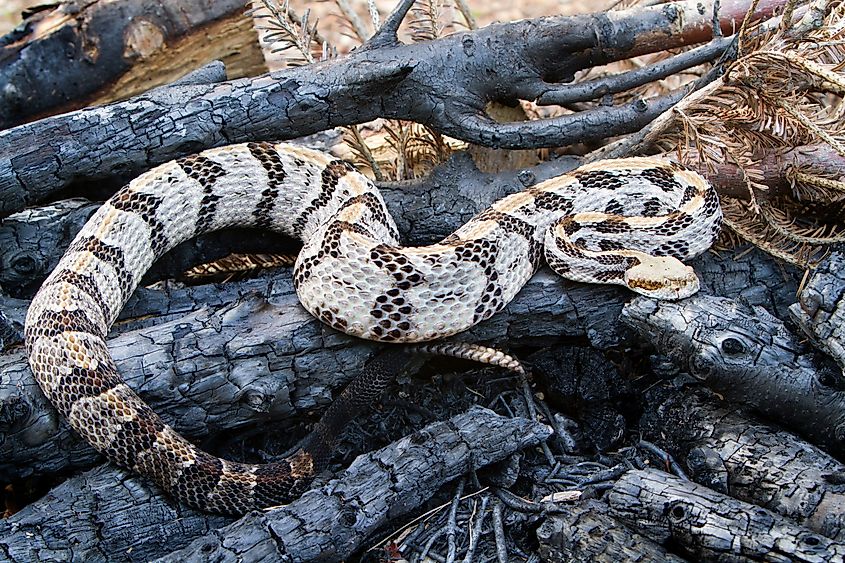
The elusive and often misunderstood timber rattlesnake (Crotalus horridus,) is a venomous snake that plays a crucial role in the environment. These creatures help maintain balance between predators and prey and help control rodent populations. Though reclusive and non-aggressive it is important to understand what to do if you encounter one.
In New Hampshire, timber rattlesnakes are critically endangered and rarely found, primarily in a few isolated areas with rocky hillsides and hardwood forests. Timber rattlesnakes typically feed on small mammals such as mice, rats, and squirrels, or birds and amphibians. They are ambush predators, relying on their camouflage and patience. These animals are most active from late spring to early fall and particularly enjoy basking in the sun during this time to regulate their body temperature.
Though not aggressive, timber rattlesnakes will bite if they feel threatened or provoked. These venomous snakes can cause tissue damage and disrupt blood clotting with a venom called hemotoxins. A bite can cause severe pain, swelling, bruising, or difficulty breathing and require immediate medical attention. Their natural camouflage coloration makes them difficult to spot, increasing the risk of accidental encounters. Keep an eye out for warning signs, the distinctive rattle of their tail, a clear sign to back off.
If you encounter a rattlesnake, stay calm and do not panic. Move slowly and deliberately away from the snake. Keep at least several feet away as they can strike at a distance equal to about half their body length. Most importantly, never touch or attempt to handle a rattlesnake. If you are lucky enough to see one, leave it be and view it from afar.
Mosquito
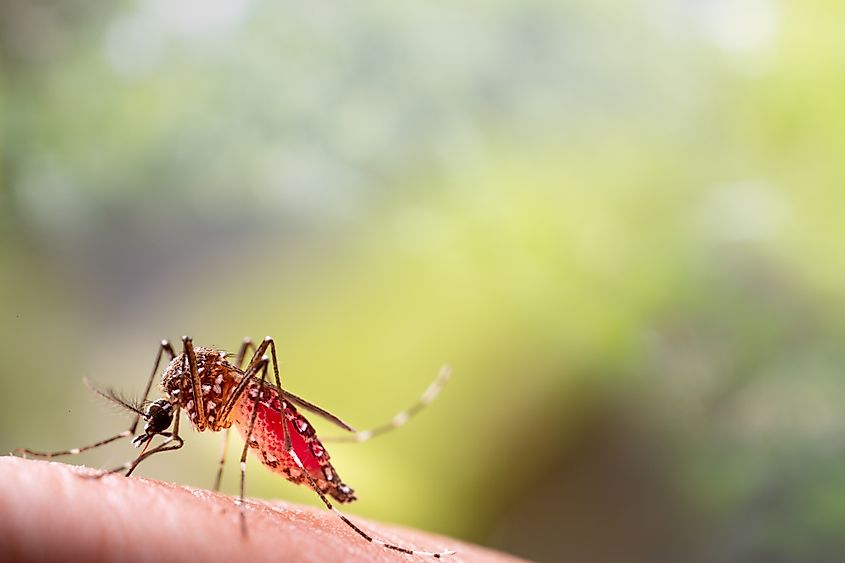
A common sight in New Hampshire, especially during the summer months, these tiny insects can be a major nuisance and health risk. Mosquitos can be found in wetlands and marshes, their breeding ground, or in any stagnant water, forests, gardens, and even urban areas. That’s right. These critters are impossible to miss. With a short lifespan of two weeks to a month, these creatures spend their time breeding and feeding. Mosquitos are most active during dawn and dusk and during warmer months with high humidity.
Driven by their need to feed and breed, mosquitos are attracted to humans because of the carbon dioxide, body heat, and certain odors we give off. Even when swatted away, mosquitos are persistent and will continue to feed. These insects extract blood through their bite, which causes itching and swelling. Their saliva contains anticoagulants, helping them feed and also triggering an immune response in humans.
More than just a nuisance, these insects can pose significant health risks. Mosquitos transmit diseases such as West Nile virus and Eastern Equine Encephalitis (EEE). Some may be allergic to mosquito bites, causing a dangerous allergic reaction. Though these beasts are tricky to avoid, there are some foolproof methods to minimize bites. Use insect repellent containing DEET, picaridin, or lemon eucalyptus oil on skin and clothing. Wear protective clothing such as long-sleeved shirts, pants, and socks to minimize exposed skin. Avoid or eliminate stagnant water, like that from a bird bath or gutters.
Though in the great outdoors, a mosquito bite is inevitable, you can take practical steps to minimize risk and protect yourself and your family. Make sure to cover up and use insect repellent. Stay vigilant, stay protected, and make the most of your time in nature.
Tick
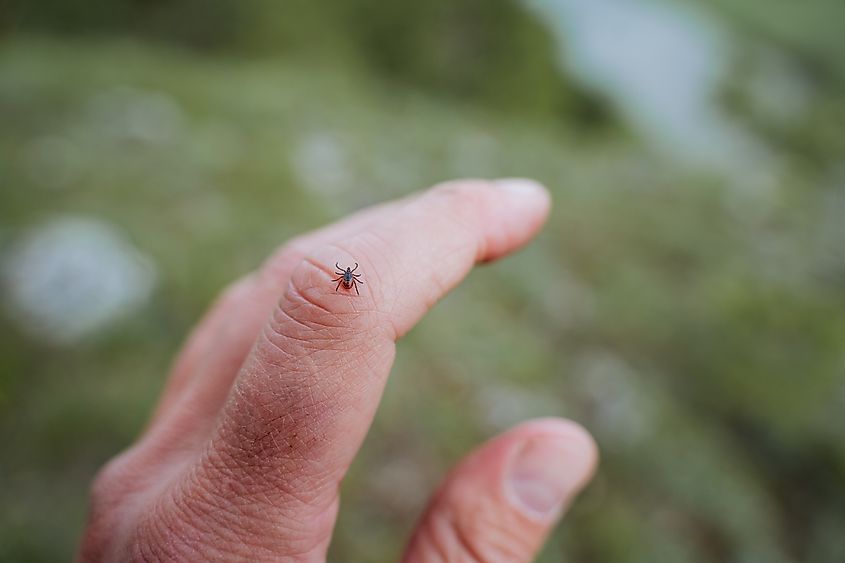
While you’re enjoying your outdoor adventure, be weary of ticks, a tiny yet formidable pest. You’ll find these insects in forest and wooded areas, tall grass and shrubbery, leaf litter, or in urban settings like parks, gardens, and yards. With a complex lifecycle, ticks are opportunistic feeders. They wait from their hiding spot for a host to brush past them, sensing a potential host through body heat, moisture, and vibrations. They hunt for hosts using a technique called questing. This is where they climb to the tips of grasses and leaves, extending their front legs to latch onto a potential host. Once onboard, they will find a suitable feeding spot, such as the armpit, groin, or scalp. Ticks attach to their host and feed on their blood for several days, secreting a cement-like substance to secure their hold.
So, what makes these pests one of the most dangerous animals in the United States? More than just a nuisance, ticks can carry serious diseases such as Lyme disease, anaplasmosis, babesiosis, and Rocky Mountain Spotted fever. Encountering a tick can be unsettling, but following a few essential tips can ensure your safety. After spending time outdoors, check yourself thoroughly for ticks, including clothing and body hotspots such as armpits, groin, and scalp. When you are enjoying the outdoors, wear protective clothing such as long-sleeved shirts, long pants, and high socks. Try tucking your pant leg into your sock to reduce exposed skin. Stay on marked trails and use tick repellent containing DEET, picaridin, or permethrin on skin and clothes.
If you find a tick on you, promptly remove it following these steps:
- Use fine-tipped tweezers to grab the tick as close to the skin’s surface as possible.
- Pull upward with steady and even pressure. Do not twist or jerk. This can cause part of the tick to break off while the other part remains embedded in the skin.
- After removing the tick, clean the area thoroughly with rubbing alcohol, iodine scrub, or soap and water.
- To dispose of the tick, place it in alcohol and seal the bag.
- Monitor for symptoms of illness such as rash and fever. If symptoms develop, seek medical attention.
Though part of the natural environment, you can minimize the risk these formidable nuisances pose. After being outdoors, check yourself for ticks thoroughly. If you find one burrowed in your skin, use the tips above and address it promptly.
Black Bear
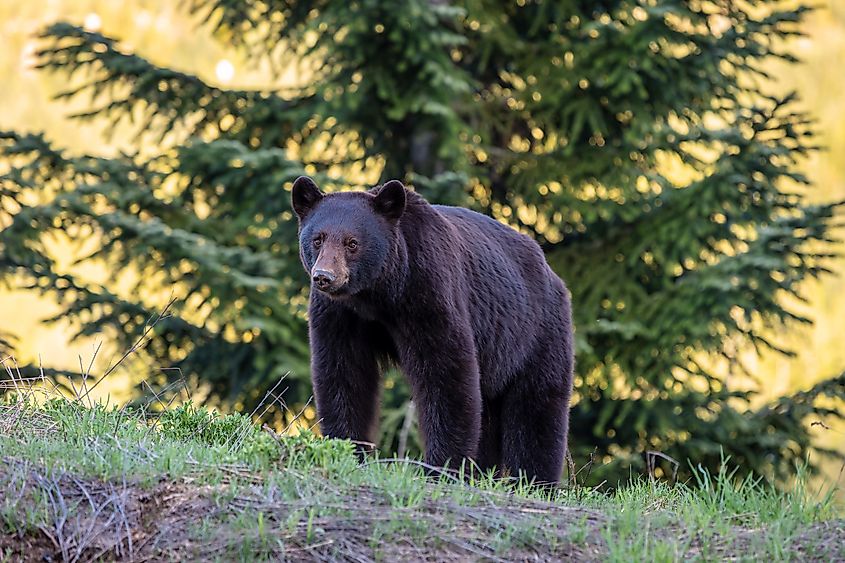
A captivating and sometimes cute sight, the black bear is an essential part of the ecosystem. These animals are adaptable and can be found in forests, mountains, wetlands, and even urban and suburban areas. Being omnivores, these animals eat berries, nuts, insects, and small mammals. They sometimes forge for human food in the garbage or bird feeders. Though generally more active at dusk and dawn, you might see a black bear any time of the day. During the winter, the black bears enter a hibernation state where they live off stored fat.
New Hampshire's black bear population is healthy and widespread across the state, with frequent human-bear encounters, especially in areas where bears can access human food sources. With their iconic reputation, mother bears are highly protective of their cubs and may act aggressively against a perceived threat. Accidentally, surprising a black bear can provoke an aggressive response, especially at close range. Don’t get between a bear and their food. Bears defend their food source, and those who associate food with humans may act boldly or aggressively.
Though exhilarating, encountering a black bear can be a frightening experience. Stay calm. Do not run, as this could trigger a chase response. Speak calmly and assertively. Wave your arms to make yourself look more prominent. Do not block the bear’s path. Instead, give them space and a route to escape. Carry around a can of bear spray and know how to use it. Do not climb a tree! Bears are excellent climbers. On the off chance a black bear attacks you, do not play dead. Fight back with anything you have.
By understanding these remarkable creatures, you can stay safe in New Hampshire’s beautiful outdoors. Respect the black bear, and if you’re fortunate enough to see one, keep your distance.
Fire Ants
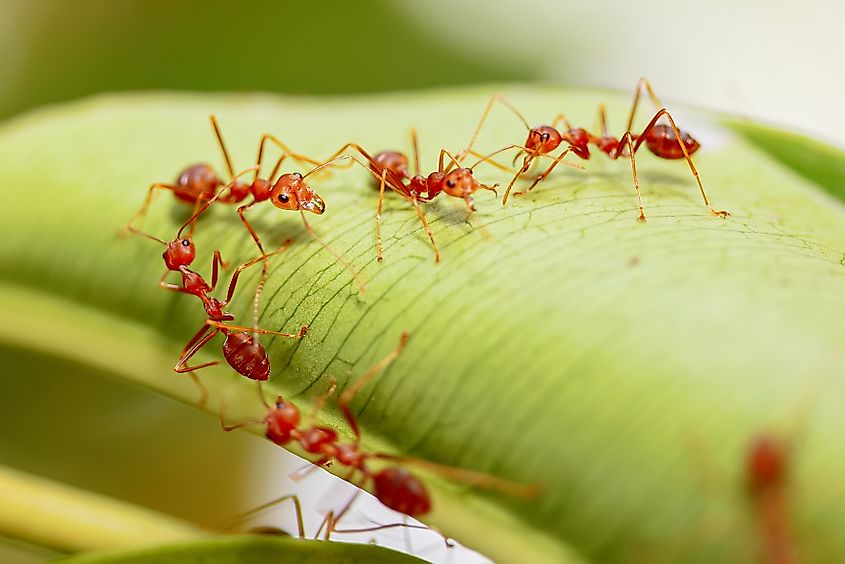
Fire ants are not currently a significant concern in New Hampshire, but they are known for their painful stings and aggressive behavior. These highly adaptable insects thrive in open fields and meadows, croplands, pastures, near water sources such as rivers, lakes, and ponds, and urban areas such as parks and gardens. Fire ants have a well-organized social structure, living in a colony. These colonies consist of a queen, workers, and reproductive males and females. The queen’s primary role is to lay eggs while workers maintain the nest, forage for food, and care for the young. Some fire ant colonies have multiple queens, leading to rapid growth and the establishment of new colonies.
Unlike many other ants, Fire ants are aggressive and territorial, defending their territory against any perceived threat. They are highly defensive of their nest and will swarm and attack intruders if disturbed. Not only do these ants have a mighty painful sting that can cause severe reactions in some individuals, but they are also invasive. Fire ants displace native ant species and disrupt local ecosystems. They can also damage electrical equipment and infrastructure.
Avoid disturbing fire ant nests or mounds. Keep a safe distance to avoid triggering an aggressive response. When outdoors, wear long-sleeved shirts and pants to minimize exposed skin. Always keep insect repellent on hand, spraying skin and clothes to deter ants. If you are stung by a fire ant, clean the area with soap and water and use over-the-counter antihistamines or hydrocortisone cream to alleviate itching and pain. If you experience a severe reaction, seek medical attention immediately.
Taking proactive measures to manage fire ants is important when exploring New Hampshire. Maintain distance from nests and mounds and make sure you wear bug repellent.
Wasps
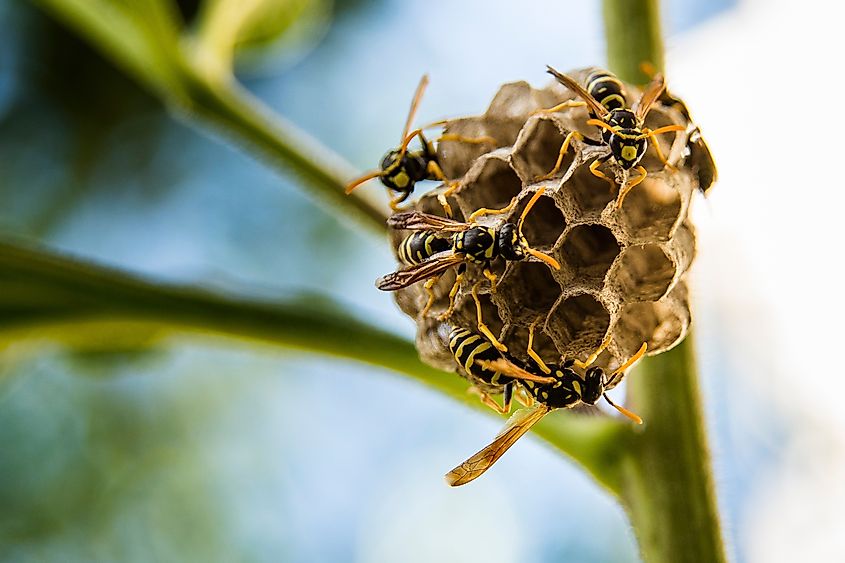
A common sight in New Hampshire, especially during the warmer months, wasps can play a crucial role in the ecosystem in areas such as pollination and pest control. However, these insects can pose a threat to safety. Wasps are highly adaptable and can be found in yards, gardens, forests, fields, sheds, buildings, or burrowed in the ground. Wasps are omnivores, feeding on nectar, fruit, and other insects. Social wasps such as yellow jackets and paper wasps have organized social structures. They may live in a colony with a queen, workers, and drones. While solitary wasps, such as mud daubers, live and operate alone.
Depending on the situation, wasps can be defensive or aggressive. If they or their nest is threatened, they may sting. Unlike other bees, wasps can sting multiple times. Their stings are painful and can cause redness, swelling, or itching. A more severe reaction can occur with multiple stings or if someone has an allergic reaction to their sting. If you encounter a wasp, do not swat or make sudden movements. Back away slowly. Avoid perfumes and bright colors that might attract wasps and cover your food and drinks while outdoors. Never disturb a wasp nest. If you come across one in a problematic location, call a professional exterminator.
If stung by a wasp, clean the area with soap and water and apply a cold compress for the swelling. If needed, take an antihistamine to alleviate itching and seek professional medical help for severe reactions. Appreciate and respect the important role wasps play while staying safe and vigilant.
Coyotes
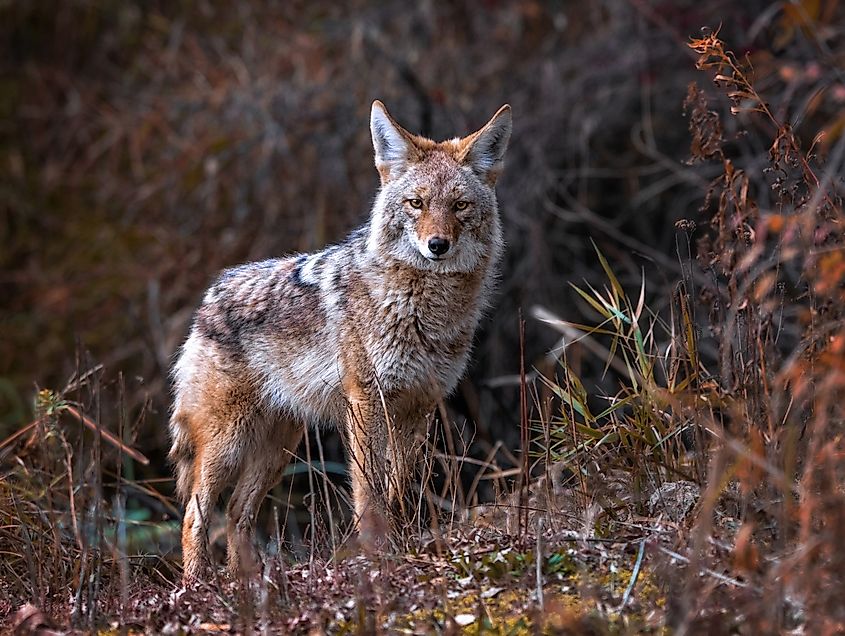
Coyotes are an integral part of New Hampshire's wildlife, showcasing remarkable adaptability and resilience. However, these animals can pose a threat to humans, pets, and livestock. Coyotes are incredibly adaptable and can be found in forests, fields, meadows, urban and suburban settings, or farmlands. These omnivores have a diverse diet of small mammals, birds, fruits, vegetables, insects, and even human food waste. Shy and elusive, coyotes tend to avoid human contact but can be very territorial. They mark their territory using howls and scent markings. Sometimes, coyotes exhibit curiosity and opportunistic behavior. They will investigate new sights, sounds, and smells.
Coyotes are not typically aggressive but may prey on small pets like cats or small dogs and pose a threat to livestock. If they are accustomed to being fed by humans, coyotes can act aggressively toward humans. Coyotes can also carry diseases such as rabies. If you encounter a coyote, stay calm and do not run. Make yourself big by standing tall, waving your arms around, and shouting. Never approach a coyote. If one approaches you, use hazing techniques such as throwing small objects (like stones or sticks), using noise-making devices, or spraying them with water to reinforce their natural fear of humans. Most importantly, if a coyote shows signs of illness or displays unusual behavior, report it to the local wildlife authorities.
White Tail Deer
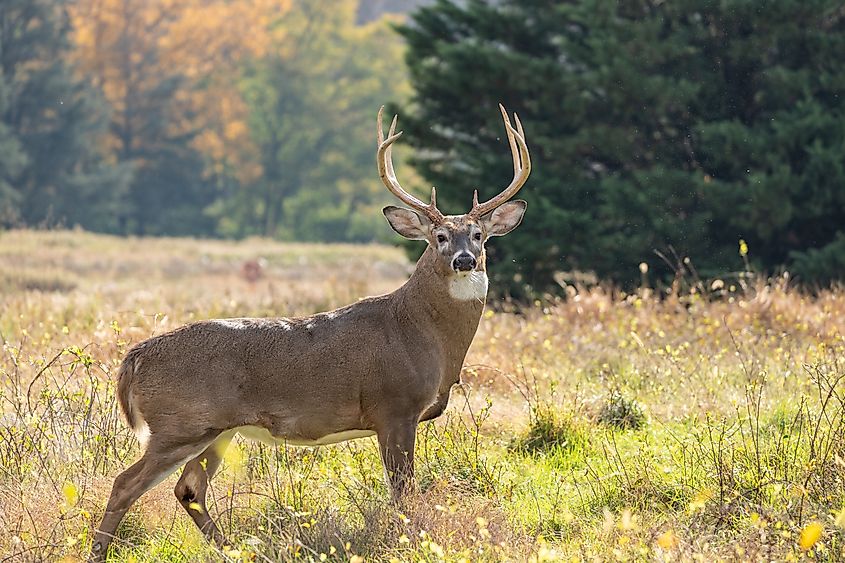
Familiar and cherished white-tail deer may surprise you by being on this list. These elegant animals are an integral part of New Hampshire’s ecosystem. They can be found in forests, fields, meadows, suburban areas, wetlands, and riverbanks. Deer are herbivores, feeding on a wide variety of plants, from twigs and leaves to fruits and nuts. Though they can be seen at any time of day, they are typically most active during dusk and dawn, making them crepuscular. These creatures live in small family groups. When you see one deer, there are certainly more nearby.
These cautious animals generally don’t pose a threat to humans; however, these animals can cause car accidents. Deer-vehicle collisions are common in New Hampshire, particularly during the fall mating season. These accidents can cause serious vehicle damage, injury, or even death. When driving through deer-populated areas of New Hampshire, slow down and use your high beams. Stay vigilant, as these animals may run into the road at any moment. And remember, when you see one, there are more!
Wild Boar
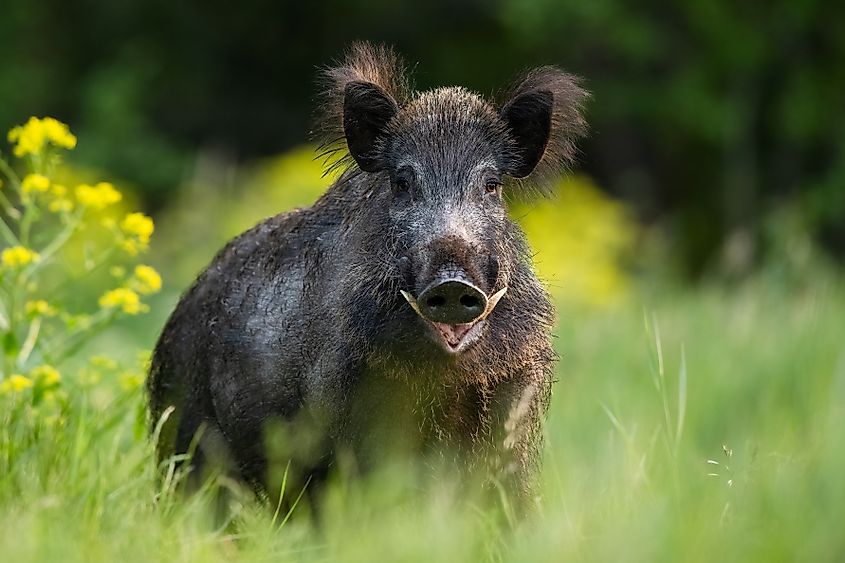
Wild boars, also known as feral hogs or wild pigs, are not native to New Hampshire and have a very limited presence. They can cause significant damage to the environment and agriculture and pose a risk to human safety. Very adaptable, wild boars flourish in forests, fields, farmland, wetlands, swamps, and sometimes urban and suburban areas. These animals are omnivores, eating roots, fruits, nuts, insects, and small animals. They are known for their destructive foraging behavior, rooting up the ground in search of food. They live in groups called sounders, consisting of females and their offspring. Adult males are more solitary, joining sounders during mating season.
Boars have a strong instinct to defend themselves and can be aggressive and unpredictable. When threatened, they may charge at threats, their tusks inflicting severe injuries. Boars can carry diseases and transmit them to humans and crops, such as swine influenza, hepatitis, and leptospirosis. Not only do they pose a physical threat to human safety, but their rooting behaviors can cause extensive damage to crops, pastures, and gardens. They disrupt ecosystems by damaging vegetation, soil, and water sources, negatively impacting native plants and animals.
If you encounter a wild boar, stay calm and do not run. Make yourself appear big and find a barrier between you and the boar, such as a tree or boulder. Avoid areas with boar activity and report it to local wildlife authorities if you see one.
North American Porcupine
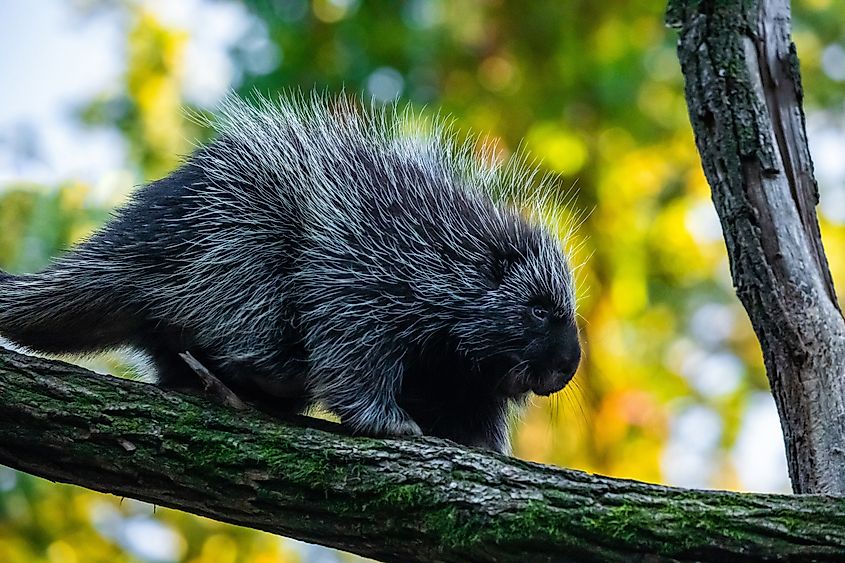
A fascinating mammal, the North American porcupine is a common resident of New Hampshire. With its distinctive quills and slow, deliberate movements, the porcupine sparks both curiosity and caution. This animal can be found in forests, woodlands, thickets, and rocky outcrops. Haven’t seen one? Try looking up. Excellent climbers, you might be surprised to spot these animals in the trees. Their diet consists of tree bark, leaves, twigs, foliage, and herbs. These creatures are solitary and nocturnal, foraging for food at night and resting during the day.
Though porcupines are typically non-aggressive, their unique defense system can pose a threat to humans and pets. When threatened, a porcupine may chatter its teeth, emit a strong odor, or raise its quills. Be warned of their quills. Sharp and barbed, these quills can easily detach into human skin. Quill injuries are painful, difficult to remove, and can cause infections.
If you encounter a porcupine, stay calm and do not make any sudden movements. Keep your distance and leash your pets. These animals do not pose an immediate threat if left undisturbed. If you or a pet gets quilled. Seek medical or veterinary attention immediately. These fascinating creatures are best seen from afar. Observe and appreciate this brilliant creature from a safe distance, and enjoy your time outdoors.
Striped Skunk
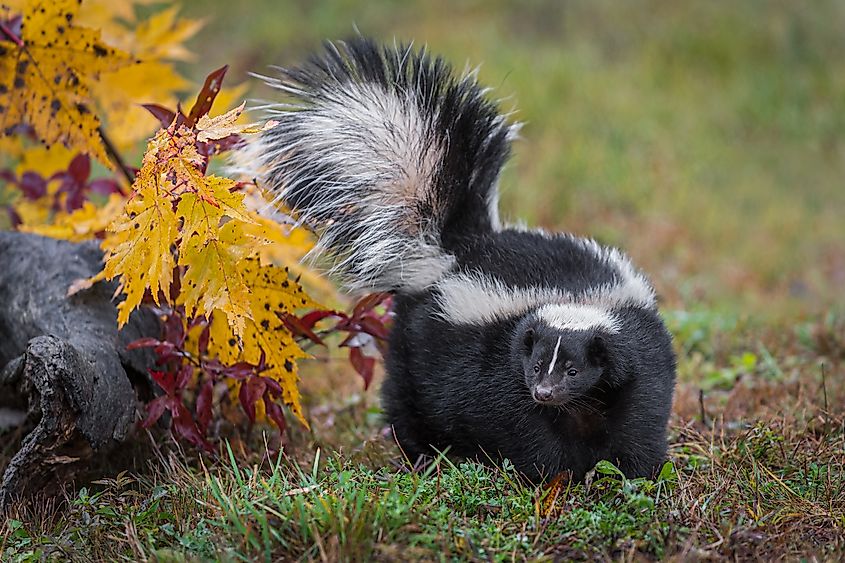
Easily recognized by its distinctive black and white fur, the striped skunk is a commonly misunderstood animal. Known for their pungent defense mechanism, skunks play a significant role in the ecosystem. These highly adaptable animals can be found in forests, fields, grasslands, agricultural areas, wetlands, and urban or suburban areas. They use burrows, hollow logs, or spaces under buildings for dens. Nocturnal and solitary creatures, skunks forage for food at night. Their varied diet includes insects, small mammals, fruits, and vegetables.
Though well-known for their unique defense mechanisms, skunks are generally docile and non-aggressive. They can spray a foul-smelling liquid from glands near their tail, spraying up to 10 feet away. Before spraying, a skunk may hiss, stomp its feet, or raise its tail. However, skunks prefer to avoid conflict and will only spray as a last resort. Skunk spray can cause temporary blindness, severe discomfort, and a lingering odor that is difficult to remove. These animals may carry rabies, a transmissible disease.
If you encounter a skunk, do not panic or make sudden moves. Keep your distance, and do not attempt to handle it. If the skunk starts displaying warning signs, back away or give it space to retreat. Leash your pets and keep them away from skunks. If you see a skunk that appears sick or one has taken up residence near you, contact local wildlife authorities. Stay curious and safe by avoiding an unpleasant encounter.
Stay Safe While Enjoying New Hampshire’s Wildlife
While encounters with these animals can be dangerous, attacks are relatively rare. It's essential to respect wildlife and take precautions when enjoying the outdoors. Keep in mind the tips mentioned above: Always observe wildlife from a safe distance, stay calm and avoid sudden movements if an encounter occurs, use repellents, wear protective clothing, and carry necessary safety gear like bear spray. Understanding the behaviors and habitats of potentially dangerous animals in New Hampshire will help you stay informed and prepared.
By following these guidelines, you can ensure a safe and harmonious experience with New Hampshire’s diverse wildlife. Enjoy the natural beauty of the state while keeping yourself, your family, and your pets safe.











